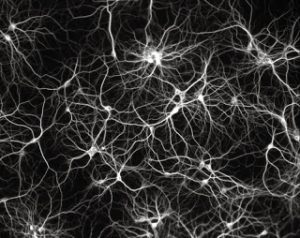
We'll start by discussing how the brain works. Don't worry, the information will not be presented in bird language. It's just important to understand how our brain interfaces with poker, so we'll cover the basics you need to know.
The basic unit of the brain is the neuron. Each neuron is connected to others through large networks known as neural nets. These networks are made up of many individual neurons connected by interconnections that are weakened or strengthened depending on the signals from the neurons. Two neurons can be strongly connected by frequent signals forming complex neural networks.
This strengthening or weakening of neuronal connections emerges as an influence in behaviour. The trace of neural networks can be seen very clearly in animal behaviour. There are two main types of influence: classical influence, where two stimuli are mentally connected and trigger an expectation or a reflex (e.g. a dog gets excited when it hears a food bell) and involuntary influence, where the consequence of a behaviour, whether positive or negative, reinforces or inhibits a particular behaviour (e.g. forcing a dog to chew a rug or rewarding it for completing a command). Influence is one of the main ways in which animals (including humans) learn complex behaviours.
Not all neural networks or systems that determine behaviour are designed on such a painful principle. Some parts of our brains are very plastic and tend to change their structure quickly, so they will learn no matter what you throw at them. Other parts of the brain are built immediately with assigned functions that exist as essential pre-modules of the brain. For example, the regulation of your internal organs, your sensory perception, as well as your survival instincts, all came without any training.
Now let's explore the process of cognition (a fancy word for thinking). It's a wonderful process, but it has its bugs. We all make mistakes when we think sometimes. There are two main cognitive errors that we need to be aware of: learned errors and pre-cognitive, or inherent, errors. Learned errors are usually easy to correct because they have been learned in a particular situation. They can simply be forgotten by the same neural mechanisms using reinforcement or inhibition. Natural errors are more deceptive,  because they are usually deeply embedded and encoded in our cognitive modules. Inherent errors are like defective software. Once it has been installed on our computer, we can no longer fix it so easily. These inherent errors are also called cognitive biases.
because they are usually deeply embedded and encoded in our cognitive modules. Inherent errors are like defective software. Once it has been installed on our computer, we can no longer fix it so easily. These inherent errors are also called cognitive biases.
When it comes to learning, cognition, emotions, and the reinforcement and inhibition of habits, it is vital to be aware of these potential brain blocks. Almost all human experience, intelligence and creativity arise from the cooperation of neuronal connections, strengthening or weakening the internal interconnections.
This is also where poker comes from. Poker is not just a game played with 52 cards
on the board. It is a game played between people. We are part of the game of poker. The game doesn't stop at the cards. The game extends beyond the table and into our heads. To understand poker, you have to understand how our minds work, how we think, reason, hope and make up our minds.
Of course, nobody is saying that as poker players we can collapse the concept of cognition down to neuronal cooperation (without saying anything about neuroscience). Nevertheless, these concepts will help us to understand the patterns and logic of the players' actions that are triggered by our cognitive function. Despite its complexity, what is made up of neurons needs to be understood and analysed.





